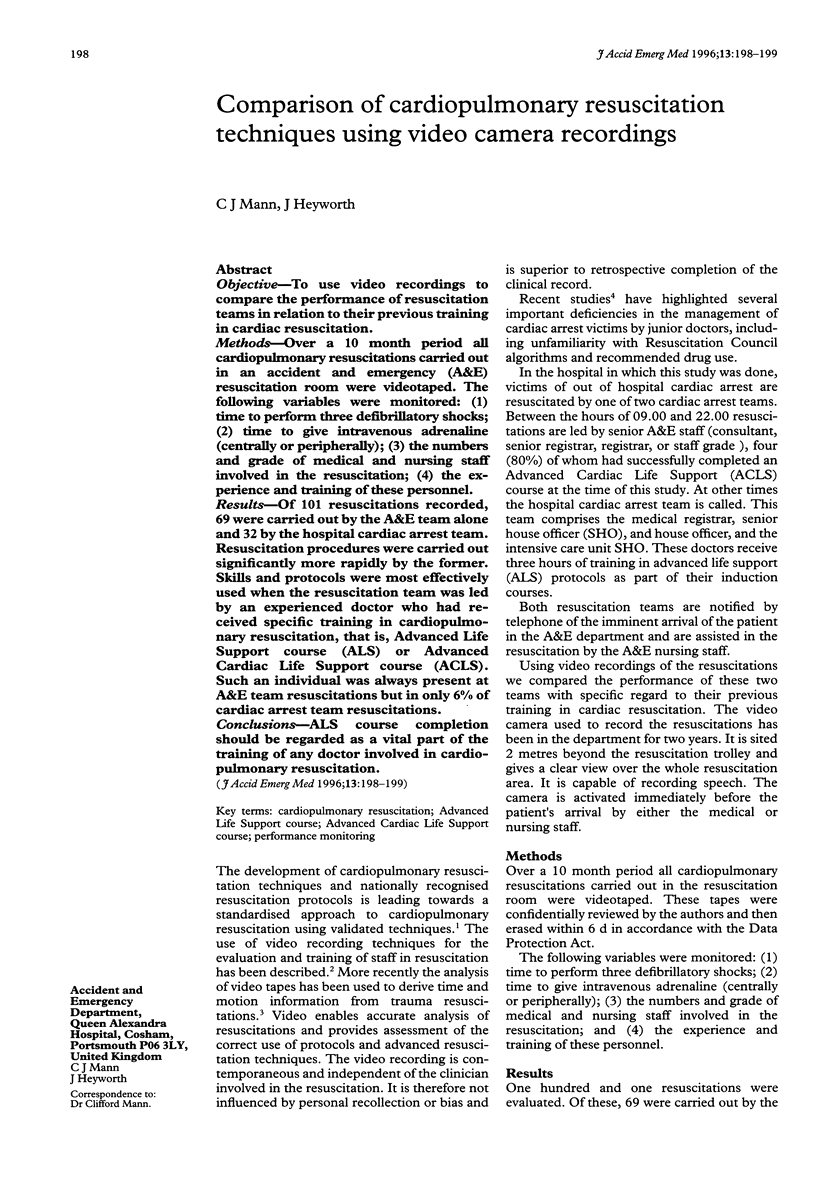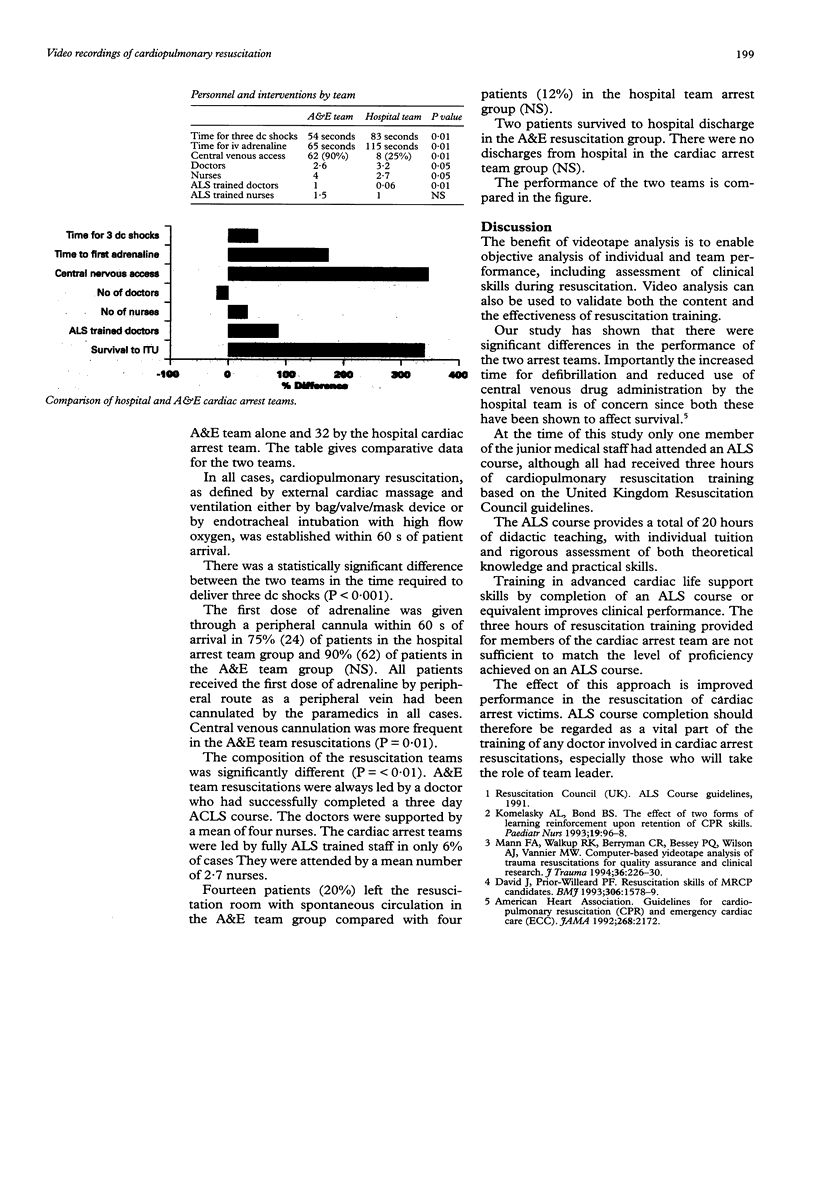Abstract
OBJECTIVE--To use video recordings to compare the performance of resuscitation teams in relation to their previous training in cardiac resuscitation. METHODS--Over a 10 month period all cardiopulmonary resuscitations carried out in an accident and emergency (A&E) resuscitation room were videotaped. The following variables were monitored: (1) time to perform three defibrillatory shocks; (2) time to give intravenous adrenaline (centrally or peripherally); (3) the numbers and grade of medical and nursing staff involved in the resuscitation; (4) the experience and training of these personnel. RESULTS--Of 101 resuscitations recorded, 69 were carried out by the A&E team alone and 32 by the hospital cardiac arrest team. Resuscitation procedures were carried out significantly more rapidly by the former. Skills and protocols were most effectively used when the resuscitation team was led by an experienced doctor who had received specific training in cardiopulmonary resuscitation, that is, Advanced Life Support course (ALS) or Advanced Cardiac Life Support course (ACLS). Such an individual was always present at A&E team resuscitations but in only 6% of cardiac arrest team resuscitations. CONCLUSIONS--ALS course completion should be regarded as a vital part of the training of any doctor involved in cardiopulmonary resuscitation.
Full text
PDF

Selected References
These references are in PubMed. This may not be the complete list of references from this article.
- David J., Prior-Willeard P. F. Resuscitation skills of MRCP candidates. BMJ. 1993 Jun 12;306(6892):1578–1579. doi: 10.1136/bmj.306.6892.1578. [DOI] [PMC free article] [PubMed] [Google Scholar]
- Komelasky A. L., Bond B. S. The effect of two forms of learning reinforcement upon parental retention of CPR skills. Pediatr Nurs. 1993 Jan-Feb;19(1):96-8, 77. [PubMed] [Google Scholar]
- Mann F. A., Walkup R. K., Berryman C. R., Bessey P. Q., Wilson A. J., Vannier M. W. Computer-based videotape analysis of trauma resuscitations for quality assurance and clinical research. J Trauma. 1994 Feb;36(2):226–230. doi: 10.1097/00005373-199402000-00015. [DOI] [PubMed] [Google Scholar]


